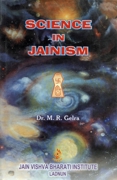
After a period of extensive research in the literature and history of the Jains it remained for two scholars of the next generation to write the complete exposition of Jainism and its teachings. One was the late Helmuth von Glasenapp, whose Der Jainismus eine indische Erloesungsreligion appeared in 1925, the other was Walther Schubring (1881-1969) and he was the pupil of Ernst Leumann.
Schubring published quite a number of canonical works. The foremost amongst them is the disciplinary text of the Brihad Kalpasutra. An edition and translation of this fundamentally important text formed his doctoral thesis in Strassburg. Afterwards, he published vyavaharenisiha, a critical edition of the first part of Ayeranaga, and his most monumental work entitled in English "the Doctrine of the Jains" where he endeavoured for the first time to draw complete picture of lord Mahavira's teachings, and, of course, on also the History of Jain Community and the History of Jain literature and all the entirely founded on first hand knowledge of the canonical texts.
So far, Jainism has been studied mostly with the help of medieval sources. Jacobi also did the pioneering work in the field but Schubring succeeded in not only reading through but also mastering the whole swetamber siddantha and working it up in this masterpiece work, which was later on translated into English.
It should perhaps be mentioned that after the study of different prakrits by H. Jacobi, Pischel,Geiger and others, it was feit that the interval between these languages and the modern idioms had been unduly neglected. Therefore, studies in Apabhramsa were taken up by Ludwig Alsdorf (Hamburg) and Klaus Bruhn (Berlin).
L. Alsdorf's first special field of work was Apabhransha. He published studies on some Apabhransha tales in one of the works dealing with Jain King Kumarpala of Gujrat. Then afterwards it was Hermann Jacobi to whom he came to know in his very last years, the fact that he met him personally, Jacobi entrusted to him a manuscript of Apabhransa work that had been sent to him from India. It was the Haripurana part of Trisastimaha purusagun alankare of puspadanta. a big epic, and he got this shortly before he went to India, in 1930, and in India he was able to photograph two more manuscripts of that work. So that he was able for the first time to edit a big Apabhransa text with the help of several manuscripts, with long introductions dealing with the development of Jain universal history, the parallel works and so on.
In India, Alsdorf was presented by the Munimaharaj Punyavijay among other works with his edition of Vasudevahindi of Sangadasa and when he examined this work after his return to Berlin. He discovered that there was a unique Jain contribution to Indian literature namely the oldest literature, the oldest Version of the famous Brihat katha of Gunadhya. It was an independent version with considerable changes. He began working on these texts but Second World War interrupted his work. Afterwards he devoted last years of his life to studying the older commentaries on the sacred writings, The Nijjuttis. Bhasyas. and Churnis and he suggested this as fruitful field of research to several of his pupil.
The Indian scholar Prof. A.N. Upadhay carried his work. Mrs. Mette (Munich), the disciple of Prof. Alsdorf published the first complete translation of considerable portion of Ogha Nijjutti. It is one of the most interesting disciplinary texts giving the rules for begging practice of the monks and other things. This text is extremely difficult to understand but invaluable not only for the understanding of its canonical predecessors but also for the knowledge of the history of monkhood in medieval times, also for ordinary daily life in medieval times. It gives a wonderful picture of medieval Indian culture. It must be said that western research was almost exclusively centred on the swetambara as they had the availability of canonical scriptures.
It is a matter of great concern that at present, the young generation of scholars is unable to uphold the old and famous tradition of Jain studies in Germany. The reasons seem to be evident. The scholar does not want to devote the long period for which he has to learn Sanskrit, then Prakrit and then Jain studies. In Germany, the learning of German language is compulsory so to add the learning of two more languages i.e. Sanskrit and Prakrit becomes difficult for the scholar. Any attempt made to study Jain literature directly will certainly attract the scholars for research work and the old traditions of Jain Chairs in the Department of Indology in Germany may flourish. However, even today leading figures like Klaus Bruhn, Mrs. Mette are sufficient proof that this great tradition of German Jainology is still alive.
 Dr. Mahavir Raj Gelra
Dr. Mahavir Raj Gelra

